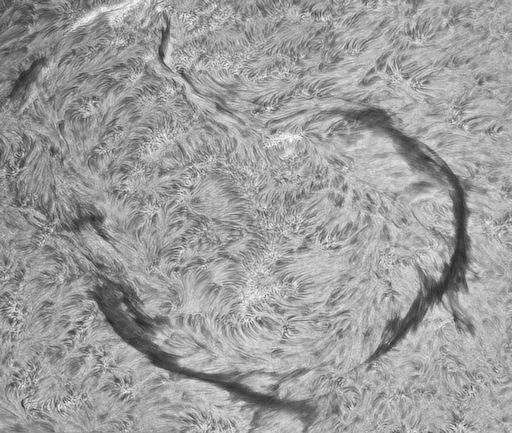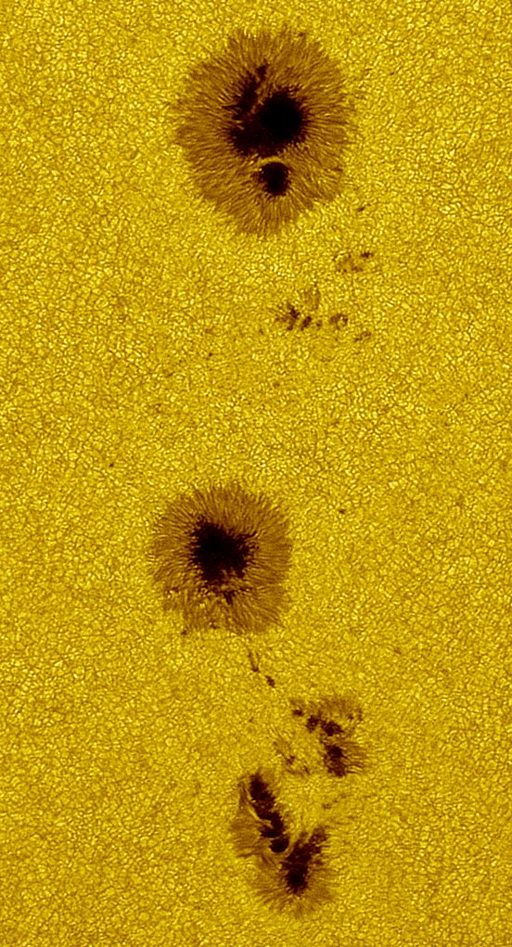Delta4Embassy
Gold Member
Had one a few months ago so this is not to be confused with a 'megaflare.'
SpaceWeather.com -- News and information about meteor showers, solar flares, auroras, and near-Earth asteroids
"GREAT CIRCLE OF MAGNETISM: A dark filament of magnetism in the sun's southern hemisphere has curled upon itself to form a circle of gargantuan porportions. The circumference of the ring is almost a million kilometers--dimensions that make it an easy target for backyard solar telescopes. Amateur astronomer Peter Desypris sends this picture from Athens, Greece
"I could not fit the entire ring in my telescope's field of view," says . "This is a mosaic of two images."
Bushy magnetic filaments are often unstable, and they have a tendency to collapse. Filaments crashing to the surface of the sun can cause of a type of explosion called a Hyder flare. Any flare from this filament could be extra-energetic as it releases the tension stored in its million-km coil. Amateur astronomers are encouraged to monitor the structure for possible developments. "

SpaceWeather.com -- News and information about meteor showers, solar flares, auroras, and near-Earth asteroids
"GREAT CIRCLE OF MAGNETISM: A dark filament of magnetism in the sun's southern hemisphere has curled upon itself to form a circle of gargantuan porportions. The circumference of the ring is almost a million kilometers--dimensions that make it an easy target for backyard solar telescopes. Amateur astronomer Peter Desypris sends this picture from Athens, Greece
"I could not fit the entire ring in my telescope's field of view," says . "This is a mosaic of two images."
Bushy magnetic filaments are often unstable, and they have a tendency to collapse. Filaments crashing to the surface of the sun can cause of a type of explosion called a Hyder flare. Any flare from this filament could be extra-energetic as it releases the tension stored in its million-km coil. Amateur astronomers are encouraged to monitor the structure for possible developments. "

